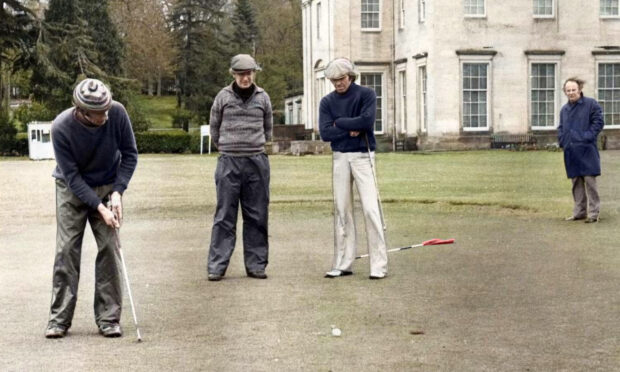Tom Lovering, a leading figure in Scottish golf tourism for more than two decades, has opened up on the challenges facing the sport following Covid-19.
Lovering – commercial director at PSP Media Group which publishes Bunkered magazine and runs The Scottish Golf Show – believes the road to recovery could be shorter than expected.
In a Q&A with Courier Sport, the PSP chief, whose firm also stages Scottish Golf Tourism Week, explains why positive action must be taken now.
How does the Scottish golf industry recover from the coronavirus?
By focusing on the short-term recovery and on the domestic market. We need to rebuild foundations over the coming months. Unbeknown to many Scottish businesses, over 50% of Scottish golf tourism already comes from people within Scotland.
Over the next six months, we need to recognise that valuable market closer to home and not take it for granted. We must encourage these golfers to play more in Scotland and we must encourage golfing staycations. September, October and November are traditionally months that golfers may want to visit other parts of the world to get their golf fix, namely Spain, Portugal and Turkey.
These same golfers will be looking for somewhere to take their golf holidays and Scotland is the perfect destination for that.
How important is golf to the Scottish economy?
Massively so. A recent study determined that the economic value of golf tourism to the Scottish economy is £286 million in output, sustaining 4,700 jobs. In the long term we must ensure Scotland is at the front of the queue and make sure that when these international golfers are ready to look at long haul destinations again, that Scotland, the home of golf, is number one on their list.
That work starts at the end of this year when, hopefully, restrictions ease and consumer confidence for long haul holidays returns. Until then, we need to tap into the passion for golf among the country’s own golfing communities with urgency.
With international travel now severely impacted, what will the knock-on effect be for the industry in Scotland?
2020 has been a complete write-off but on a more positive note, those international golfers that were due to play golf in Scotland have, in the main, rebooked to come back in 2021. Therefore, next year should be a positive year.
However, it’s for 2022, 2023 and 2024 that we need to convince international golfers to book golf in Scotland. Everyone – the Irish, English and European destinations – will be looking to bounce back strongly.
The difficult part is to convince someone, in say North America, to travel to Scotland when they haven’t booked anything yet. The prospect of securing that international business is perhaps some months away while uncertainly continues and COVID-19 restrictions remain in place.
In the meantime however, our collective aim should be to realise the opportunity initially among Scottish golfers and our ability to attract golfers from across the UK and Ireland to Scotland. To do that, we need to re-engage those markets and proudly remind them what we have to offer.
What routes should clubs be looking at to safeguard the long-term future?
There are a number of strong marketing platforms available but investment and creativity is key to make those work effectively for brands. The business-to-consumer routes to market are more difficult because the golf audience is spread far and wide given the proliferation of media channels in recent year.
Golf clubs are not currently in the best financial position to exploit some of the more resource intensive marketing channels. So cost-efficient channels are key. The business-to-business routes may provide opportunities for Scottish golf tourism stakeholders to tap into the golf audiences other businesses hold.
Our own Scottish Golf Tourism Week is a great platform in that respect. We present a platform where Scottish businesses can come and meet with in excess of 100 international tour operators, all of whom are either already or are open to the prospect of investing in marketing Scotland to golfers around the world. It’s the perfect way for clubs, hotels, distilleries etc in Scotland to meet, network and put their facilities in the shop window.
Right now we are preparing to host the event once again in St Andrews this November when we still expect over 100 different international tour operators to be in attendance.
The businesses that have attended over the first four years have enjoyed great success, the numbers speak for themselves.
Since 2016, Scottish Golf Tourism Week has directly contributed more than £50 million of additional golf tourism business to the Scottish economy.
If you had to summarise your message to the industry, what would it be?
I would suggest to clubs to draw up a geographical map that focuses on who they want to target. In the next three to six months, your map should initially focus on golfers that are no more than an hour and a half away from your business.
As it stands, people will not be keen to make long journeys to play golf so clubs must connect with and appeal to those within their community.
And you are optimistic for the future?
Absolutely! We have a nation full of passionate golfers, world-class facilities, some of the brightest and shrewdest business minds in golf and a magnificent hospitality industry. The combination is second to none and it is well within our grasp to recover lost ground quickly.










